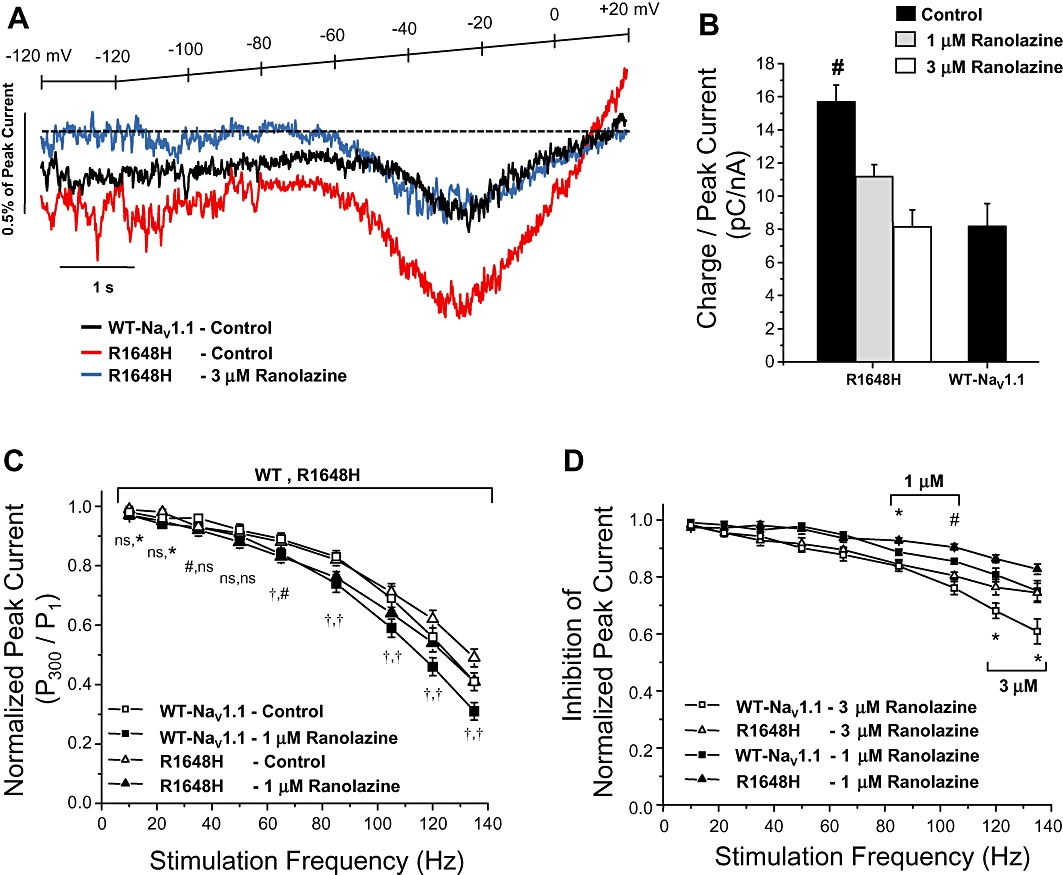Figure 6.

Ranolazine inhibits ramp and use-dependent currents. (A) Representative tetrodotoxin-subtracted ramp currents measured during a 20 mV/s voltage ramp from a holding potential of −120 mV during sequential superfusion of control solution followed by 3 µM ranolazine. The dotted line indicates zero current. (B) R1648H channels conducted significantly more charge between −40 and 0 mV of the ramp, which was inhibited in a concentration dependent manner to the level of wild-type (WT) NaV1.1 channels by 1 µM or 3 µM ranolazine (n= 9–10). (C) WT NaV1.1 and R1648H channel availability during repetitive stimulation was assessed with a depolarizing pulse train (−10 mV, 5 ms, 300 pulses) at frequencies between 10 and 135 Hz during sequential superfusion of control solution followed by 1 µM ranolazine. Normalized peak current (pulse 300/pulse 1) was plotted versus frequency for each pulse train (n= 9 and 8, respectively). (D) Inhibition of normalized peak current calculated as the ratio of channel availability during either 1 µM or 3 µM ranolazine and control conditions. Significant differences are indicated by *P < 0.05, #P < 0.01 and †P < 0.001.
